These natural-born swimmers have the secret weapon hiding between their toes.
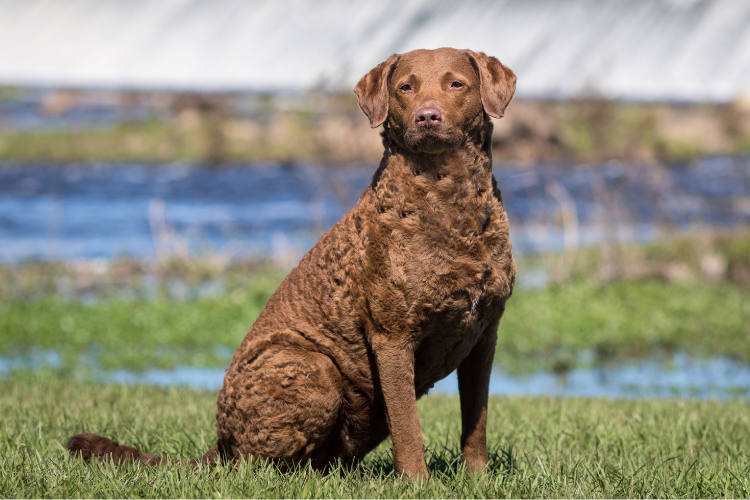
Some dogs paddle around pools like furry torpedoes while others sink like adorable stones, and the difference often comes down to what’s happening between their toes. While most dogs have some webbing connecting their digits, certain breeds sport serious swimmer’s feet that would make Michael Phelps jealous. These aquatic athletes didn’t develop their paddle-like paws by accident – centuries of working alongside fishermen, retrieving waterfowl, and performing water rescues shaped these breeds into the ultimate canine lifeguards. From massive Newfoundlands who can haul drowning sailors to safety to compact Portuguese Water Dogs who once delivered messages between ships, these webbed-footed wonders prove that evolution really does think of everything. Their secret weapon isn’t just adorable – it’s incredibly functional, turning ordinary dog paws into biological flippers that propel them through water with remarkable grace and power.
1. Newfoundlands transform into gentle giants when water calls their name.

According to the American Kennel Club, Newfoundlands were originally bred as working companions on Canadian fishing vessels, where they specialized in dramatic water rescues and could haul grown men to safety using their incredible strength and swimming prowess. These massive dogs possess partially webbed feet that work like natural flippers, combined with powerful shoulders and muscular legs that create an unstoppable swimming machine. Their thick, water-resistant double coats provide insulation against frigid waters, while their large lung capacity allows for extended underwater work that would challenge even experienced human divers.
Beyond their impressive physical capabilities, Newfoundlands possess an instinctive drive to protect anyone in water distress, making them legendary rescue dogs whose heroic tales span centuries. Modern Newfies may spend more time as beloved family pets than maritime workers, but their webbed feet and natural swimming ability remain as impressive as ever. These gentle giants still patrol beaches in France and Italy as official water rescue dogs, proving that their aquatic expertise continues to save lives around the world.
2. Portuguese Water Dogs earned their presidential seal of approval through centuries of maritime service.
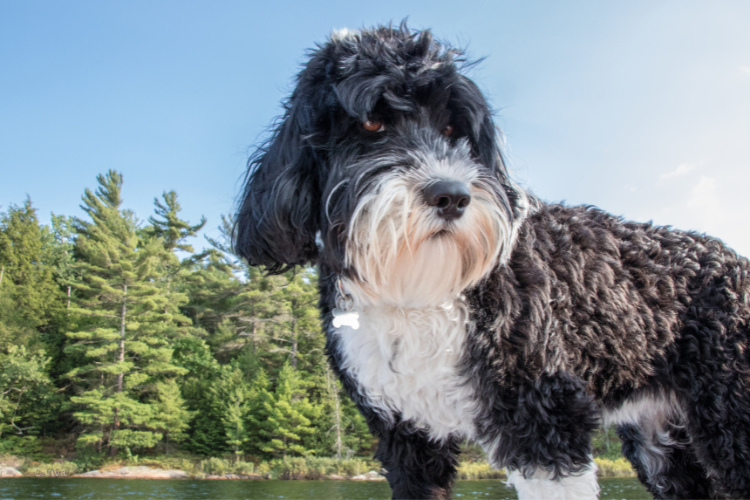
These medium-sized athletes once rode aboard Portuguese fishing trawlers as they worked Atlantic waters from Portugal to Iceland, performing tasks that would challenge any human crew member. Their distinctive webbed feet and curly, water-resistant coats allowed them to dive deep for lost tackle, herd fish into nets, and even swim messages between ships during rough seas, as reported by the Portuguese Water Dog Club of America. Bo Obama, the famous First Dog, brought worldwide attention to this remarkable breed, showcasing their intelligence and athletic ability on the ultimate stage.
Portuguese Water Dogs possess a unique combination of webbed feet and incredible endurance that made them indispensable to fishermen who depended on their aquatic skills for survival. Their tight, curly coats provide buoyancy and insulation while shedding water quickly after swimming sessions. Today’s Portuguese Water Dogs maintain their ancestors’ enthusiasm for water work, though they’re more likely to retrieve tennis balls than fishing nets, and their webbed feet continue to make them exceptional swimmers who can outlast most other breeds in the water.
3. Labrador Retrievers prove that popularity and swimming excellence go hand in flipper.
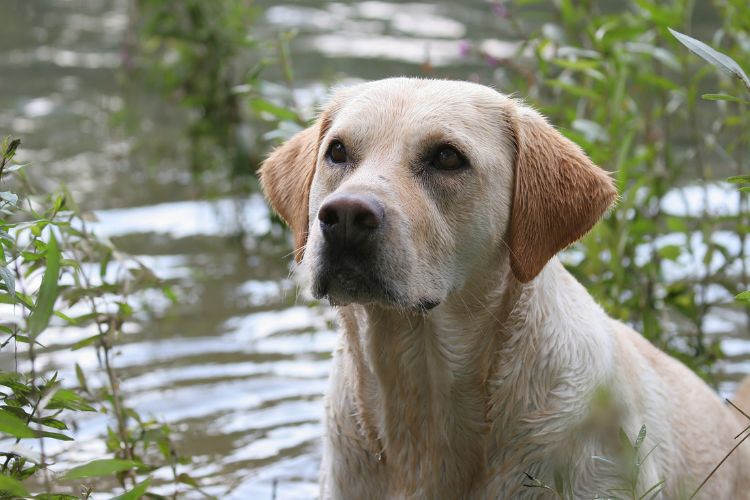
The American Kennel Club notes that Labrador Retrievers originated in Newfoundland, where European fishermen developed these dogs specifically for retrieving fishing lines and nets from icy waters, creating a breed whose webbed feet and otter-like tails make them nearly unstoppable in aquatic environments. Labs possess wide, webbed paws that function as natural paddles, paired with thick, water-repellent double coats that dry quickly and provide insulation during cold-water retrievals. Their rudder-like tails serve as biological steering mechanisms, allowing them to navigate through choppy waters with remarkable precision and control.
What sets Labs apart from other water breeds is their combination of webbed feet, athletic build, and absolutely tireless enthusiasm for anything involving water. These dogs will retrieve objects from lakes, rivers, or pools until their owners finally call it quits, and their webbed feet provide the extra propulsion needed for long swimming sessions. Ice formation was less problematic for Labs compared to their larger Newfoundland cousins, making them perfect working companions for fishermen who needed reliable performance in harsh maritime conditions that would challenge other breeds.
4. Irish Water Spaniels disguise their serious swimming skills behind playful personalities.
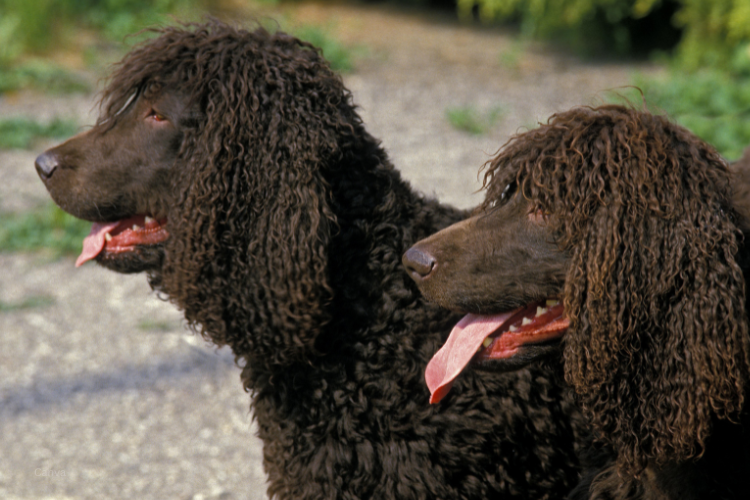
Standing tall among spaniel breeds, Irish Water Spaniels possess distinctive webbed feet that complement their dense, crisply curled coats designed for Ireland’s cold, challenging waters. Their unique rat-like tails and distinctive topknots make them instantly recognizable, but it’s their webbed feet that enable their exceptional retrieving abilities in marshes, rivers, and coastal waters. These dogs combine the webbing of serious water breeds with the intelligence and trainability that makes spaniels such excellent hunting companions.
Irish Water Spaniels represent one of the oldest spaniel varieties, and their webbed feet reflect centuries of selective breeding for aquatic work in Ireland’s demanding waterfowl hunting conditions. Their boisterous, loving personalities make them wonderful family pets, but their webbed feet and natural swimming ability ensure they excel at any water-related activity from dock diving to beach fetch sessions. While they may resemble oversized poodles, their webbed feet and athletic builds make them considerably more powerful swimmers with stamina that impresses even experienced water dog enthusiasts.
5. Chesapeake Bay Retrievers combine webbed feet with legendary toughness for harsh water conditions.

These rugged American-bred retrievers developed their distinctive webbed feet while working the icy, rough waters of Chesapeake Bay, where they needed exceptional swimming ability to retrieve waterfowl in conditions that would challenge any dog. Their dense, water-resistant undercoats and wavy outer coats provide protection from harsh weather, while their webbed feet give them the propulsion needed to work efficiently in choppy bay waters. Chesapeakes possess a hardy constitution that matches their impressive aquatic abilities, making them ideal for hunters who need reliable performance in challenging environments.
The webbed feet of Chesapeake Bay Retrievers work in perfect harmony with their muscular builds and determined temperaments to create dogs capable of working long hours in brutal conditions. Their feet provide extra surface area for powerful swimming strokes, while their thick coats offer protection from cold water that would quickly exhaust other breeds. These dogs approach water work with serious dedication, and their webbed feet enable them to maintain efficiency during extended retrieving sessions that showcase their remarkable endurance and swimming prowess.
6. German Shorthaired Pointers surprise people with their webbed feet and water enthusiasm.

Most people associate German Shorthaired Pointers with land-based hunting, but their compact, webbed feet make them surprisingly capable swimmers who love water activities. Their oval-shaped, close-knit feet feature webbing that helps them navigate rivers, ponds, and marshes while pursuing game birds that take refuge in aquatic environments. These versatile hunting dogs use their webbed feet to maintain stability and propulsion while swimming, proving that water work isn’t limited to traditional water dog breeds.
German Shorthaired Pointers demonstrate that webbed feet can enhance performance across multiple hunting scenarios, from retrieving downed waterfowl to tracking game across streams and wetlands. Their athletic builds and webbed feet combine to create dogs capable of transitioning seamlessly between land and water hunting situations. Even GSPs who never hunt often surprise their owners with natural swimming ability and enthusiasm for water activities, thanks to webbed feet that provide instinctive aquatic skills inherited from generations of versatile hunting ancestors.
7. Otterhounds possess the ultimate webbed feet designed for specialized aquatic hunting.

These large, distinctive hounds were specifically bred for hunting otters, a task that required exceptional webbed feet, cold-water tolerance, and the ability to track scents underwater. Otterhounds possess some of the most prominent webbing found in any dog breed, with feet that function as biological flippers capable of propelling their substantial bodies through water with surprising speed and agility. Their thick double coats provide insulation during extended water work, while their exceptional scenting ability allows them to track otter trails even hours after the animals have left the area.
The webbed feet of Otterhounds represent evolutionary perfection for aquatic hunting, featuring extensive webbing that maximizes surface area for powerful swimming strokes. These dogs can maintain their hunting intensity in cold water that would quickly exhaust other breeds, thanks to webbed feet that provide efficient propulsion and superior maneuverability. Although otter hunting is no longer practiced, Otterhounds retain their remarkable aquatic abilities, and their webbed feet continue to make them exceptional swimmers who approach water activities with the same focused intensity their ancestors brought to hunting expeditions.
8. Flat-Coated Retrievers combine webbed feet with infectious enthusiasm for water sports.
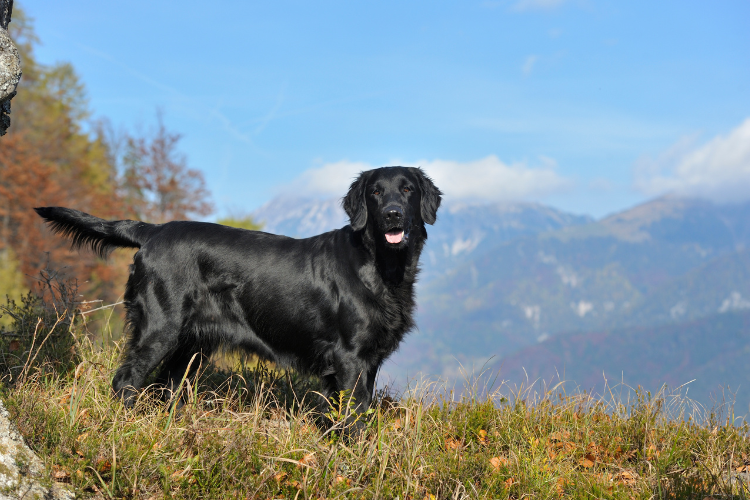
Often mistaken for black Golden Retrievers, Flat-Coated Retrievers possess distinctive webbed feet that enable their excellent swimming and retrieving abilities in lake and coastal environments. Their dense, flat-lying coats provide water resistance while their webbed feet deliver the propulsion needed for efficient swimming during extended retrieving sessions. These dogs approach water activities with boundless enthusiasm that matches their exceptional swimming capabilities, making them ideal companions for active families who enjoy beach and lake adventures.
Flat-Coated Retrievers use their webbed feet to excel at dock diving, competitive retrieving, and recreational swimming activities that showcase their natural aquatic talents. Their youthful energy and webbed feet combine to create dogs who never seem to tire of water activities, whether retrieving tennis balls or simply swimming for the joy of being in their element. The webbing between their toes provides extra surface area for powerful paddle strokes, while their athletic builds and positive attitudes make them outstanding companions for water sports enthusiasts who appreciate both performance and personality.
9. American Water Spaniels represent the ultimate Midwest water dog with perfectly adapted feet.
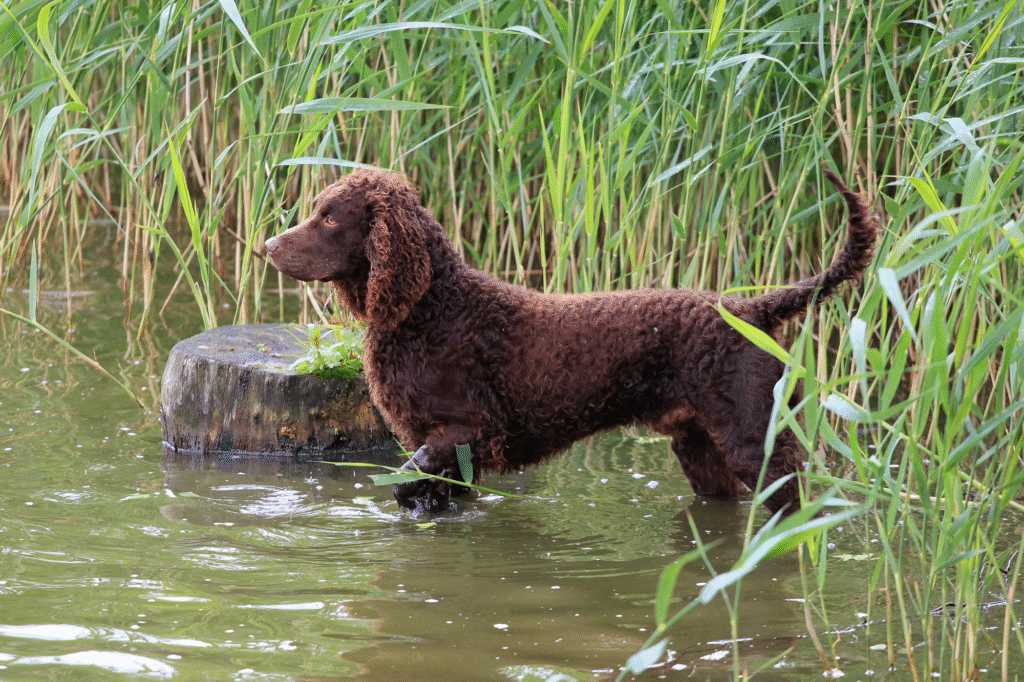
Developed specifically for the Great Lakes region’s unique hunting conditions, American Water Spaniels possess webbed feet ideally suited for navigating the varied aquatic environments of the upper Midwest. Their distinctive curly, oily coats repel water while their webbed feet provide exceptional maneuverability in everything from shallow marshes to deep lake waters. These compact dogs pack impressive swimming ability into medium-sized bodies, making them perfect for hunters who need versatile water dogs capable of working from small boats or tight marsh blinds.
The webbed feet of American Water Spaniels enable them to work effectively in the diverse water conditions found throughout Great Lakes hunting territories, from rushing streams to vast open waters. Their size and webbed feet create perfect balance for retrieving work that requires both power and precision in challenging aquatic environments. These dogs maintain their enthusiasm for water work even during harsh Midwest weather conditions, using their webbed feet to navigate icy waters that would challenge larger, less specialized breeds.
10. Boykin Spaniels prove that Southern charm includes serious swimming credentials.
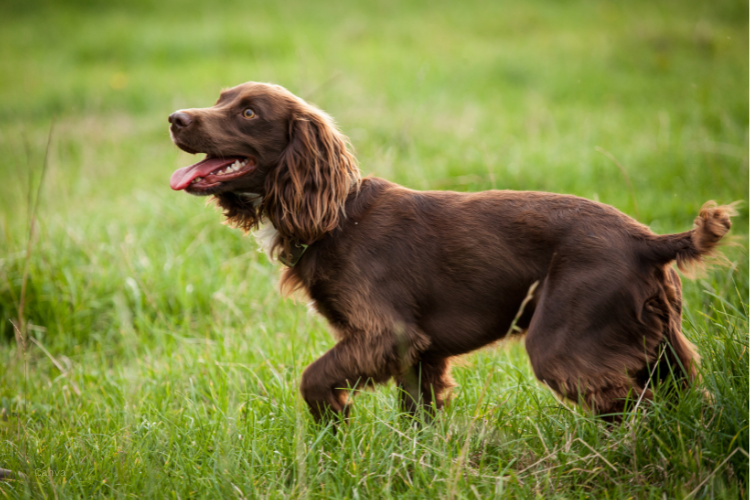
South Carolina’s state dog combines webbed feet with exceptional retrieving instincts perfectly suited for the swamps and waterways of the southeastern United States. Boykin Spaniels possess moderate webbing that enhances their swimming ability while maintaining the agility needed for retrieving waterfowl and wild turkey in challenging marsh environments. Their enthusiastic personalities and webbed feet make them ideal companions for hunters who appreciate dogs capable of transitioning smoothly between land and water work.
These relatively young breed members demonstrate how webbed feet continue to influence modern dog development, as breeders specifically selected for aquatic abilities that complement the breed’s hunting versatility. Boykin Spaniels use their webbed feet to navigate the complex waterways of Southern hunting grounds, where success requires dogs capable of swimming efficiently while maintaining focus on retrieving tasks. Their compact size and webbed feet create perfect proportions for working from canoes and small boats while providing the swimming power needed for longer retrieves across open water.
11. Poodles hide their webbed feet behind glamorous coats and sophisticated reputations.

Originally developed in Germany as water retrievers, Poodles possess webbed feet that many people never notice beneath their distinctive curly coats and elaborate grooming styles. Standard Poodles especially demonstrate impressive swimming ability thanks to webbed feet that provide excellent propulsion and their athletic builds that enable sustained water work. Their dense, water-resistant coats and webbed feet made them valuable hunting companions long before they became associated with show rings and fancy grooming.
The webbed feet of Poodles represent a perfect example of function over form, as these dogs maintain serious aquatic abilities despite their reputation as pampered pets. Modern Poodles retain their ancestors’ enthusiasm for water activities, and their webbed feet enable them to excel at swimming, dock diving, and water retrieval games that tap into their working heritage. Even toy and miniature Poodles possess proportional webbing that enhances their swimming ability, proving that effective aquatic adaptation scales successfully across different size variations within the same breed group.
